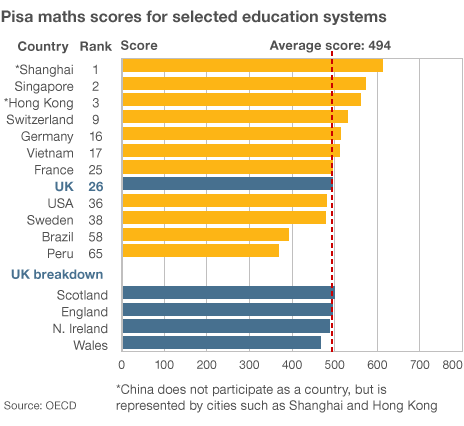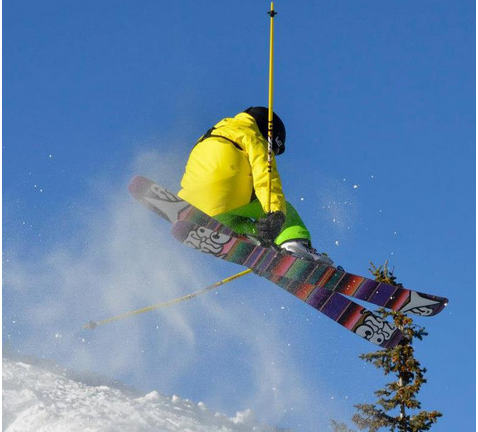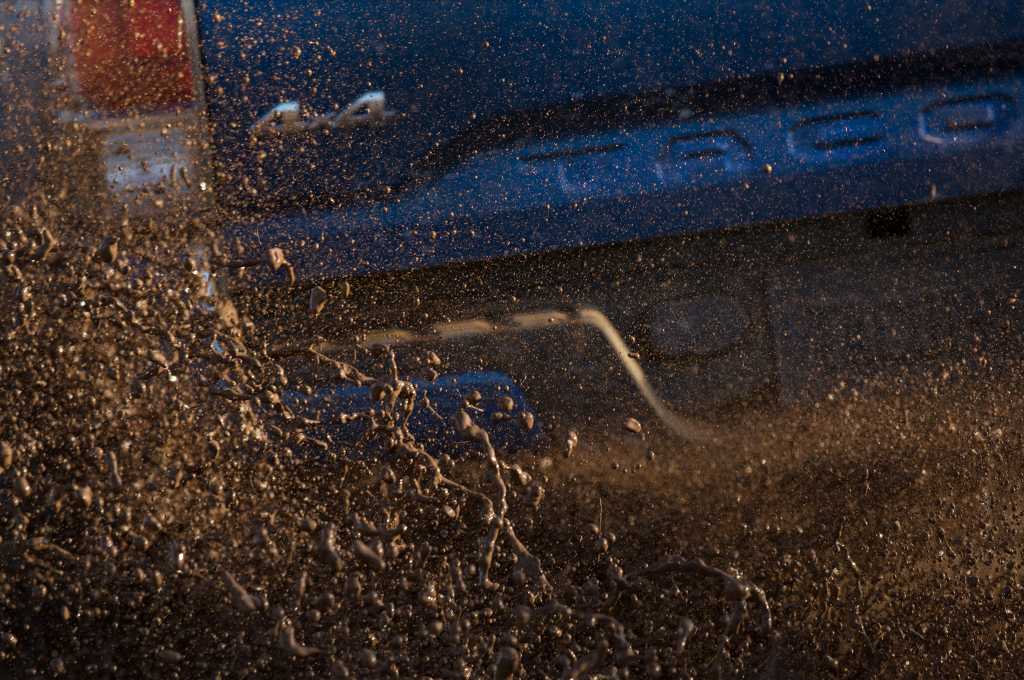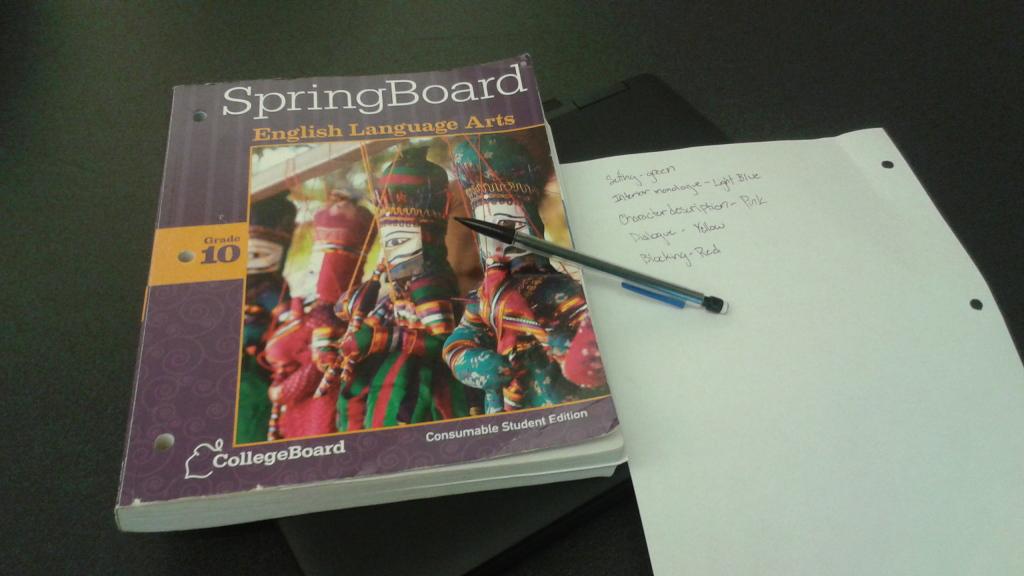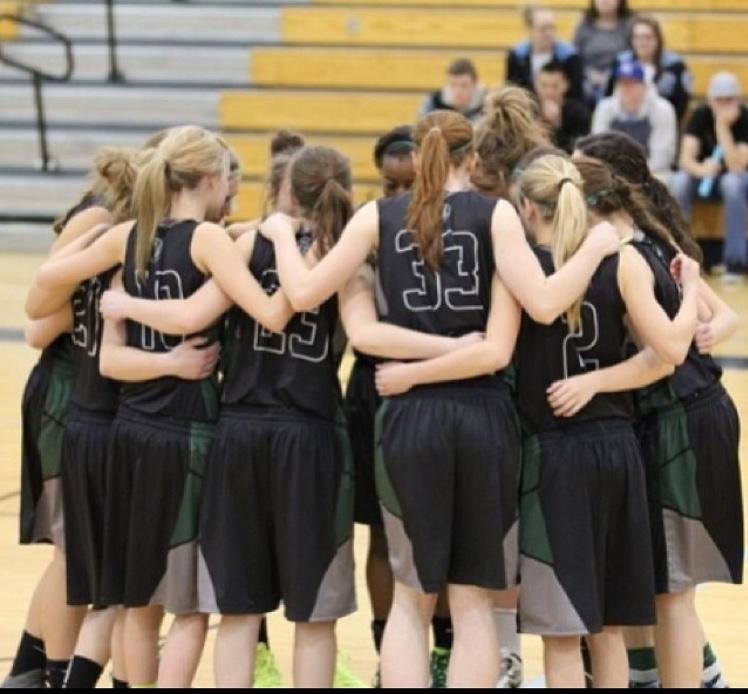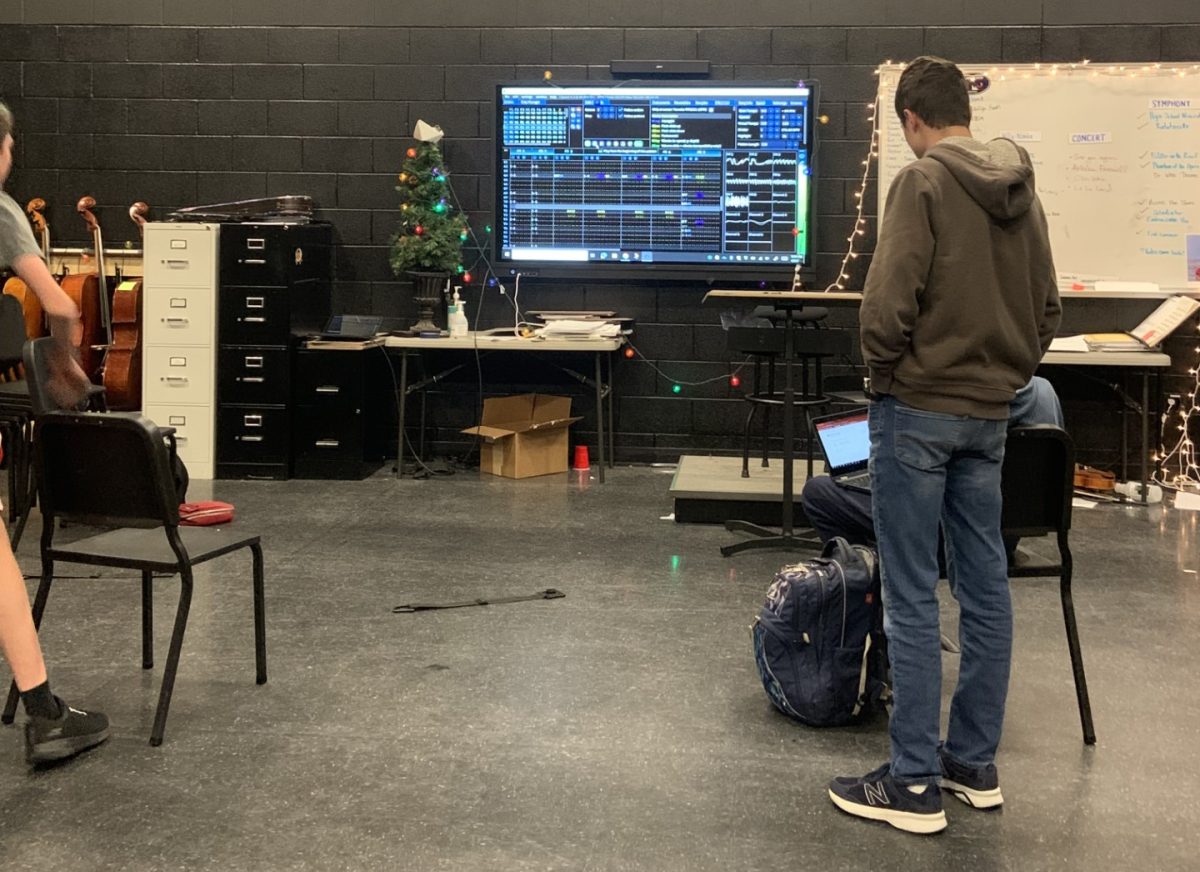In 2012 more than half a million students from 65 countries took part in the Program for International Student Assessment (PISA). It is a leading test that surveys education systems from all over the world by the Paris-based Organization for Economic Cooperation and Development(OECD). The students, age 15 to 16, took a two-hour test that consisted of math, reading and writing. PISA tests students when they are at the end of their compulsory education about subjects that they classify as “essential for full participation in modern society” and student’s abilities to apply what they’ve learned to the real world.
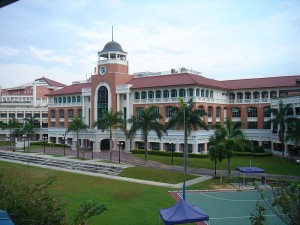
Photo credit: wikimedia commons
The exam showed that students from east Asian countries performed best overall, specifically students from Shanghai. Students from Shanghai on average scored 613 points in math, which is the equivalent of almost three years of schooling above the OECD average. Students from Singapore were a close second, followed by Hong Kong, Taiwan, South Korea and Macau. Most countries haven’t improved their scores in math since the PISA test was last performed almost a decade ago. About 60 percent of the countries that were surveyed performed at the same level or worse.
Shanghai also performed best in reading, with an average score of 570. It’s estimated they have the equivalent of one and a half years more schooling than the OECD average. Hong Kong was second in reading, followed by Singapore, Japan and South Korea. About half of the countries that took part in the survey improved in reading since their last PISA test in 2003.
Students from Shanghai also received the best score in science, and have the equivalent of almost two more years of schooling than the OECD average. Shanghai’s average score was 501. Some provinces and cities from China also took part in the survey, but not enough students have taken the test for it to be considered a valid representation of the average. China is expected to be included in the 2015 assessment.

Photo credit: wikimedia commons
Many of the countries (China, Brazil, Colombia, and Poland) that had the highest scores reported investing more training in their teachers, increasing the requirements for a teaching license, giving teachers higher salaries, and giving teachers more opportunities to go abroad. Fossil Ridge High School social studies teacher and future dean, Mark Barry, wants to see a similar attitude in American education. “[We should] pay teachers more to entice the best of the best from our pool of human resources,” he said. “[We should] change our system of educating new teachers and truly weed out those who shouldn’t teach, [and] get the mediocre and poor teachers some incentives to get better or get out and then we’ll be on our way.”
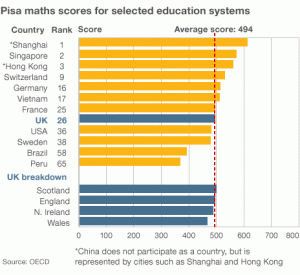
Photo credit: oecd.org
Many students in Shanghai and Japan, according to the OECD’s deputy director of education, were less likely to put off difficult problems and less likely to give up easily. A survey by the OECD reported that more than 80 percent of students in Japan disagreed or strongly disagreed that they put off difficult problems and 68 percent disagreed or strongly disagreed that they give up easily when confronted with a problem.
The United States was ranked 36th, which was below the OECD national average in mathematics, and indistinguishable from the average for reading and science.
Based on a study by the Council on Foreign Relations, the United States has fallen 10 spots in the high school and college graduation ranking within the past 30 years. There is a growing gap between socioeconomic groups, and this gap is lengthened as students’ progress through their education. The United States, similar to many industrialized countries, has an achievement gap between Caucasians and African Americans, as well as between the wealthy and the lower class. Although racial gaps seem to be closing, the difference is still evident.
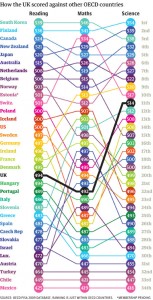
Photo credit: oecd.org
However, at the present time, American student achievement is at its highest, but education rankings haven’t made a large jump recently. Still, Barry does not see our school system falling behind. “I think that considering who we take in our public schools (everyone) and the fact that other countries only take kids who are ‘on track,’ I think we are the best at educating everyone.”
The lowest scoring country that took part in the survey was Peru, the second lowest being Indonesia and the third lowest was Qatar. The average gap between the lowest scoring countries and the highest scoring countries was the equivalent to six years of education.
“There was one girl that stood every time she spoke to a teacher,” Closson said. “The school systems in England and Australia were super strict and proper.”
Based on the OECD study, the United Kingdom ranked 26th, had an average score for mathematics and reading, and an above average score for science.
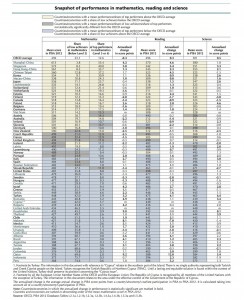
Photo credit: oecd.org
The curriculum and classes that are offered vary depending on the country as well. “The other countries where I’ve taught didn’t provide much in the way of curriculum,” Barry said of his time teaching in a monastery for Tibetan Monk children in Nepal and the Solomon Islands. “The [curriculum] was created and generated by teachers.”
In Australia, Closson said that it was mandatory for kids to learn Japanese. “I was expected to be up to that par,” she said. “So I really struggled with that because I moved around a lot.”
For more information about OECD, visit oecd.org.
For more information about OECD country education information go oecd.org/edu/educationataglance2013-countrynotesandkeyfacttables.htm


